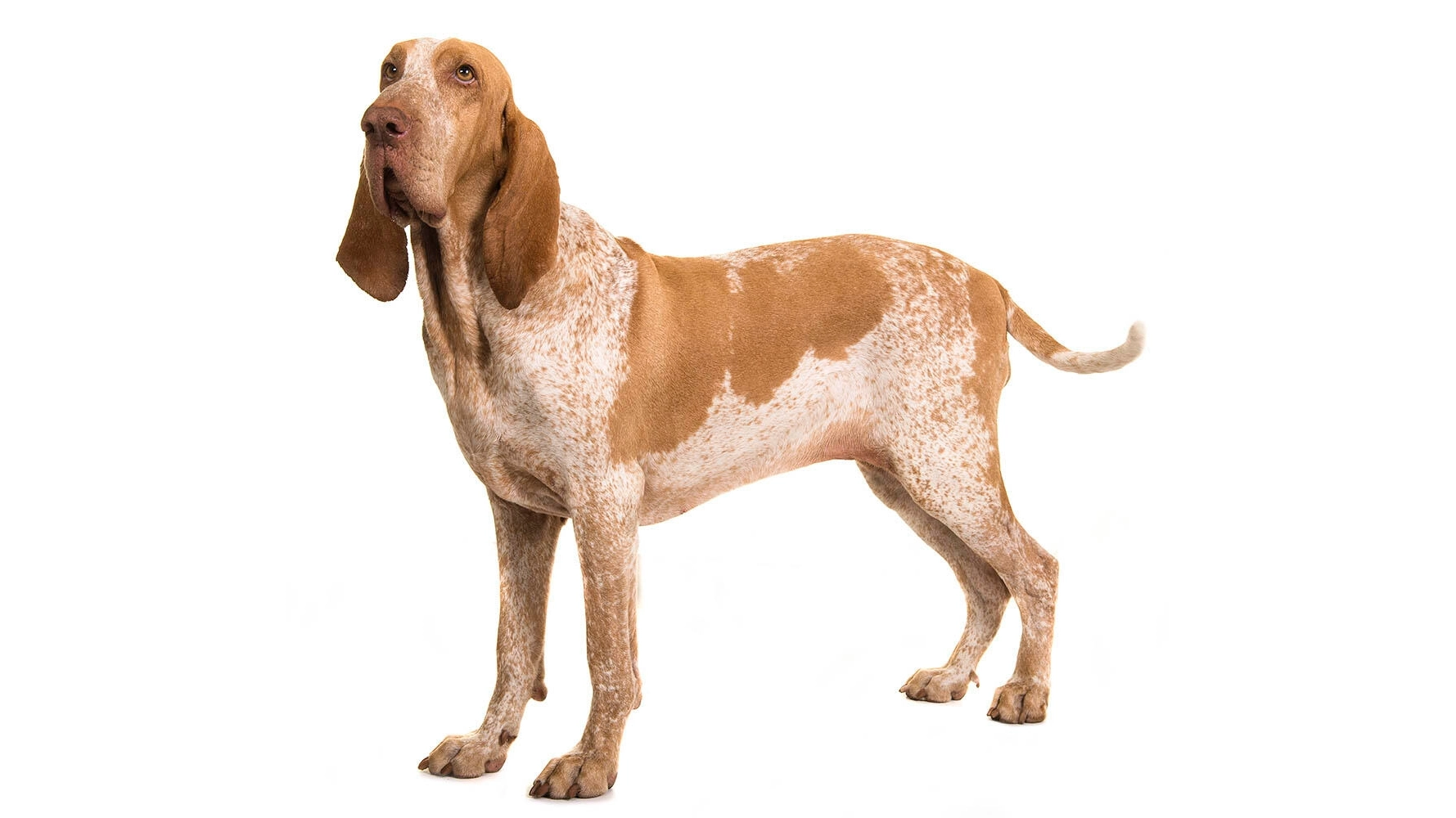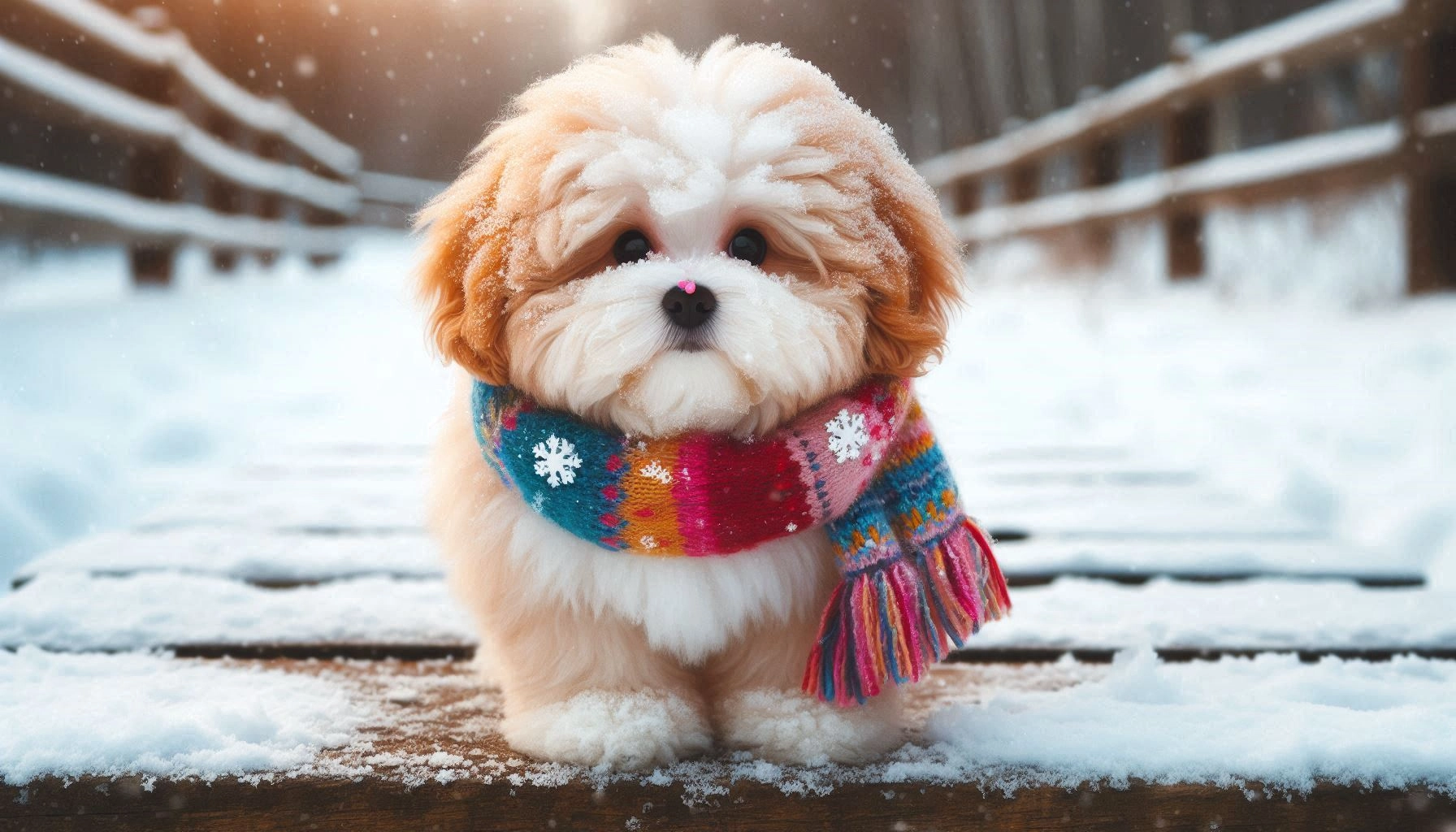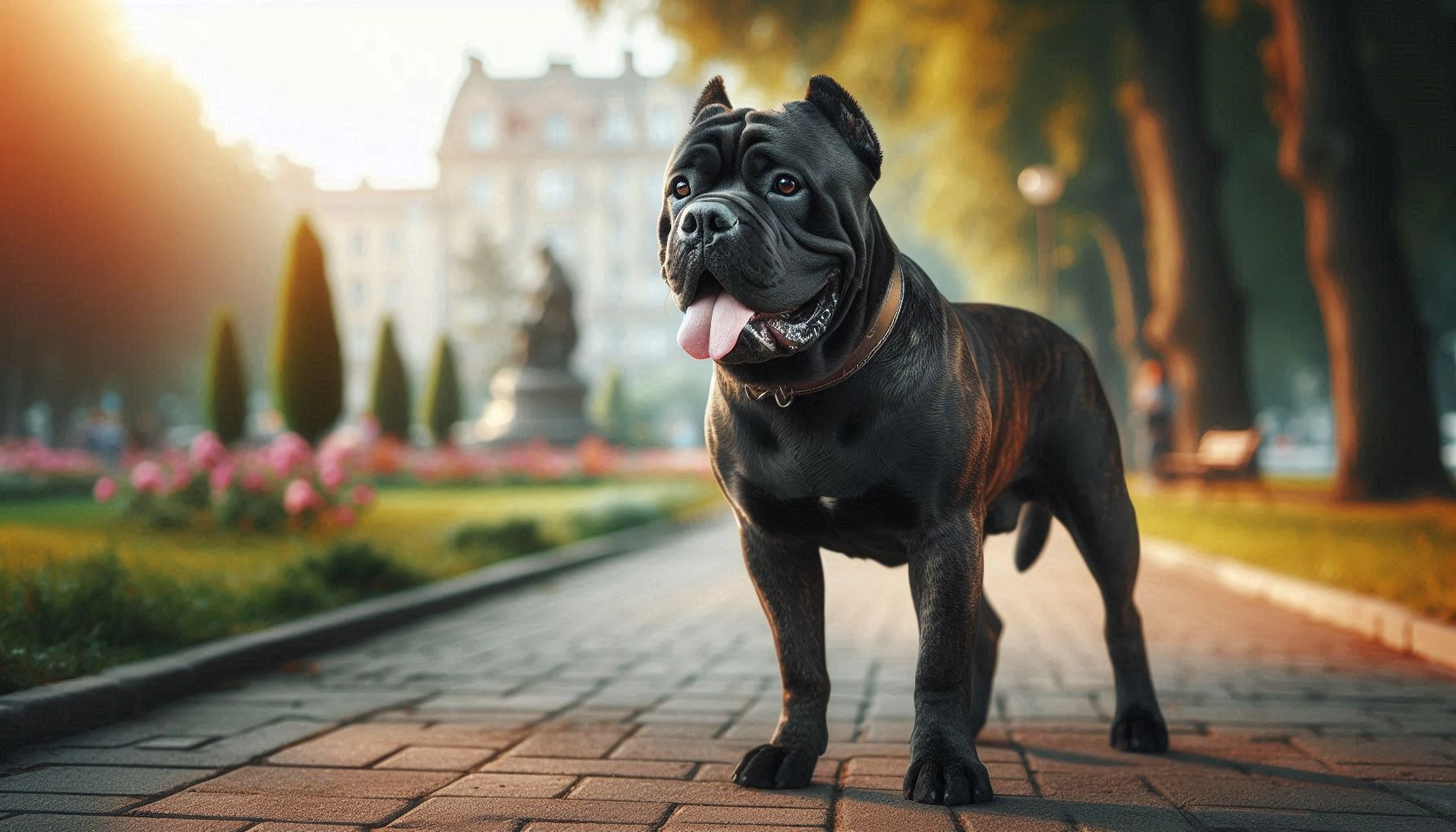Table of Contents
Neapolitan Mastiff Dog Breed
The Neapolitan Mastiff, often referred to as the “Mastino Napoletano,” is a breed that commands attention with its imposing presence and unique characteristics. Known for its massive size, wrinkled appearance, and loyal nature, this ancient breed has garnered a dedicated following among dog enthusiasts. The Neapolitan Mastiff is not just a marvel to behold but also an excellent guardian and companion. This article delves into the rich history, physical attributes, temperament, and care requirements of the Neapolitan Mastiff, providing a comprehensive guide for potential owners and admirers alike.
History and Origin

The history of the Neapolitan Mastiff can be traced back to ancient times, with roots deeply embedded in the Roman Empire. These dogs are believed to be descendants of the war dogs used by the Roman legions, known as “Molosser” dogs, which were prized for their strength and intimidating presence. Over the centuries, the breed was refined and preserved in the region of Naples, Italy, where it was primarily used for guarding estates and livestock.
One fascinating historical tidbit is that Alexander the Great is said to have played a role in the development of this breed by bringing large, powerful dogs from Asia into Greece and later into Italy. The Neapolitan Mastiff’s lineage thus includes a mix of ancient breeds that have contributed to its formidable physique and protective instincts.
Physical Characteristics

The Neapolitan Mastiff is a truly striking breed with physical characteristics that set it apart from other dog breeds.
- Size: These dogs are massive, with males typically weighing between 150-200 pounds and standing 26-31 inches tall at the shoulder. Females are slightly smaller but still impressive in size.
- Coat Type and Colors: The breed has a short, dense coat that comes in various colors, including black, blue, mahogany, and tawny. Some Neapolitan Mastiffs may have brindle patterns or small white markings on their chest and toes.
- Distinctive Features: One of the most recognizable features of the Neapolitan Mastiff is its loose, wrinkled skin, particularly around the face and neck. This gives the breed a distinctive, somewhat droopy appearance. Their massive heads, broad muzzles, and deep-set eyes add to their imposing look, while their thick, muscular bodies exude power and strength.
Temperament and Personality
Despite their daunting appearance, Neapolitan Mastiffs are known for their gentle and loyal nature. They are deeply devoted to their families and can be incredibly affectionate and protective.
- Interaction with People: These dogs form strong bonds with their owners and are often described as “velcro dogs” because they love to stay close to their human companions. They are naturally wary of strangers, making them excellent guard dogs, but they are not typically aggressive without cause.
- Interaction with Children: Neapolitan Mastiffs are generally good with children, especially if raised with them. Their protective nature extends to the youngest members of the family, and they can be patient and gentle. However, due to their size, supervision is recommended to prevent accidental knocks or injuries.
- Interaction with Other Animals: With proper socialization, Neapolitan Mastiffs can coexist peacefully with other pets. Early exposure and consistent training are key to ensuring harmonious relationships with other animals.
Health and Lifespan
Neapolitan Mastiffs, like many large breeds, have a relatively short lifespan, typically ranging from 7 to 9 years. They are prone to several health issues that potential owners should be aware of:
- Common Health Issues: These can include hip and elbow dysplasia, heart problems, cherry eye, and bloat (gastric torsion). Regular veterinary check-ups and a well-balanced diet can help manage these conditions.
- Tips for Keeping the Dog Healthy: To keep a Neapolitan Mastiff in optimal health, ensure they have a balanced diet rich in essential nutrients, regular exercise to maintain a healthy weight, and routine veterinary care. Additionally, being mindful of their joint health and avoiding excessive strain on their growing bones during puppyhood can prevent future issues.
Care and Grooming
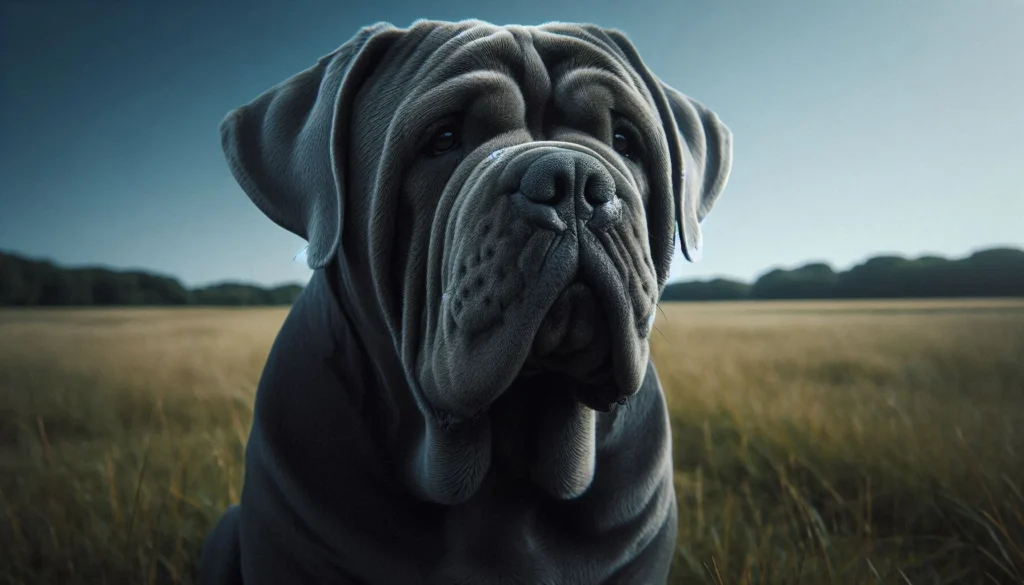
Caring for a Neapolitan Mastiff requires attention to their grooming, exercise, and dietary needs.
- Grooming Needs: Despite their short coats, Neapolitan Mastiffs require regular grooming to keep their skin healthy. Weekly brushing with a rubber grooming mitt can help remove loose hair and reduce shedding. Their wrinkles should be cleaned and dried regularly to prevent infections.
- Exercise Requirements: While they may look imposing, Neapolitan Mastiffs do not require excessive exercise. Daily walks and moderate playtime are sufficient to keep them healthy and happy. Over-exercising, particularly in hot weather, should be avoided due to their susceptibility to overheating.
- Dietary Recommendations: A high-quality, balanced diet tailored to large breeds is essential. Given their size, they are prone to bloat, so feeding smaller, more frequent meals and avoiding vigorous activity after eating can help prevent this condition.
Training and Socialization
Training and socialization are crucial for the Neapolitan Mastiff to ensure they become well-behaved and balanced dogs.
- Training Techniques: Positive reinforcement methods work best with this breed. They respond well to praise, treats, and consistent, firm guidance. Early training is essential to establish good behavior patterns.
- Socialization Tips: Exposing Neapolitan Mastiffs to a variety of people, environments, and other animals from a young age can help them become more well-rounded and less wary of new situations. Puppy classes and controlled social interactions are beneficial.
- Challenges for New Owners: Due to their size and strength, training a Neapolitan Mastiff can be challenging for first-time dog owners. Patience, consistency, and professional training assistance, if needed, are important to ensure proper behavior.
Suitability as a Family Pet
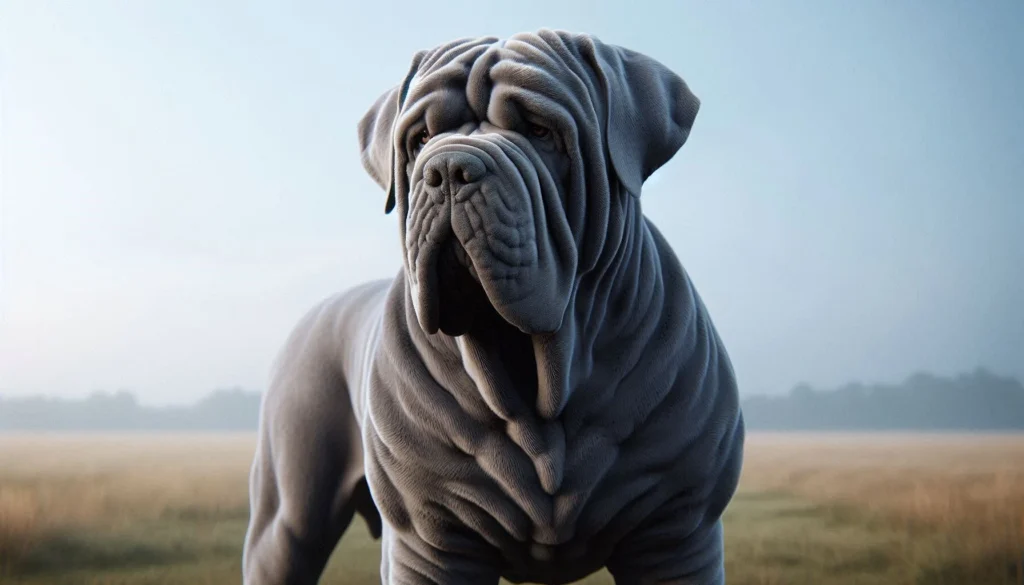
Neapolitan Mastiffs can make wonderful family pets for the right households.
- Living Environment: Due to their size, they are better suited to homes with ample space, such as houses with yards. They are not ideal apartment dogs unless the living space is large enough to accommodate them comfortably.
- Energy Levels: Neapolitan Mastiffs have moderate energy levels. They enjoy lounging around the house but also need regular exercise to stay healthy.
- Family Dynamics: They thrive in families where they receive plenty of attention and interaction. Their protective nature makes them excellent watchdogs, but they require owners who can manage their size and strength.
Fun Facts and Trivia
- Historical Guardians: Neapolitan Mastiffs have been used as guardians of property and livestock for centuries, thanks to their intimidating appearance and protective nature.
- Wrinkle Defense: The breed’s loose, wrinkled skin and dewlap were originally developed to protect them in fights by providing an extra layer of defense.
- Film Fame: Neapolitan Mastiffs have appeared in several movies, including the famous role of Hagrid’s dog, Fang, in the Harry Potter series.
Dog Breeds Similar to Neapolitan Mastiff
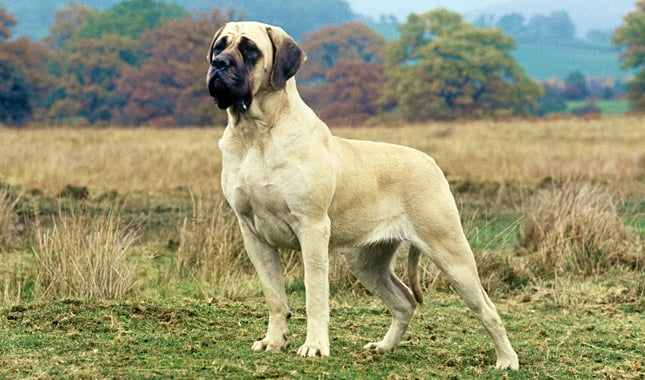
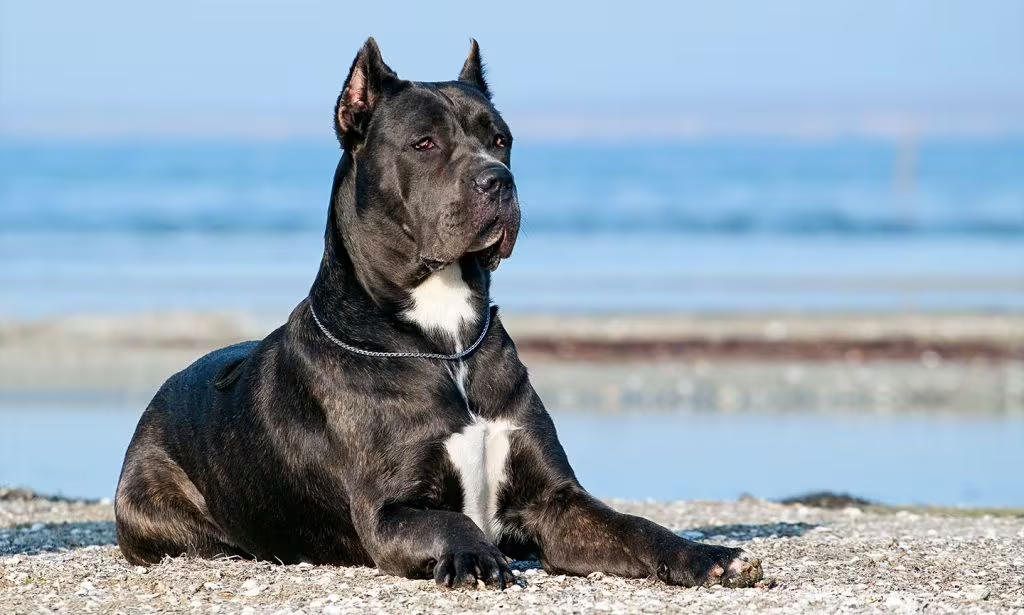
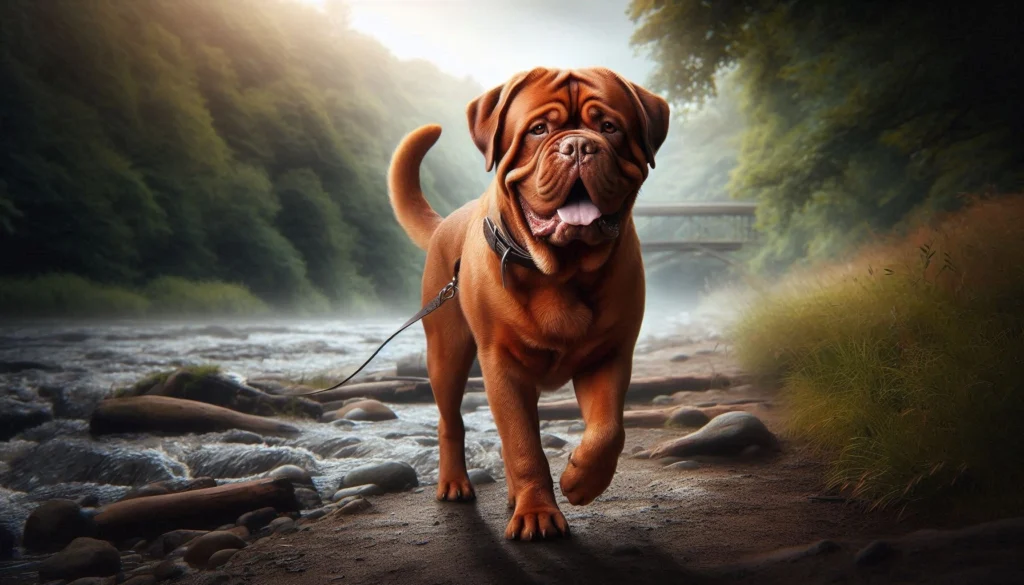
- English Mastiff: Similar in size and guarding instincts, the English Mastiff is known for its gentle and calm demeanor. They share the same imposing presence but tend to have a smoother coat and less prominent wrinkles.
- Cane Corso: Another Italian breed, the Cane Corso is slightly smaller but possesses similar protective instincts and loyalty. They are highly trainable and make excellent family pets and guard dogs.
- Dogue de Bordeaux: Also known as the French Mastiff, this breed shares the Neapolitan Mastiff’s massive build and wrinkled appearance. They are loyal, affectionate, and protective, making them great companion animals.
Conclusion
The Neapolitan Mastiff is a breed that combines ancient lineage with modern-day companionship. Their unique physical characteristics, loyal temperament, and protective instincts make them a cherished breed among those who understand their needs. If you are considering adding a Neapolitan Mastiff to your family, be prepared for a loyal friend who will guard and love you unconditionally. Learn more about this majestic breed, and consider whether you can provide the space, training, and care they require.
FAQ
Is the Neapolitan Mastiff a dangerous dog?
No, the Neapolitan Mastiff is not inherently dangerous. While they are protective and wary of strangers, they are typically calm and affectionate with their families. Proper training and socialization are essential to ensure they are well-behaved and balanced.
Is the Neapolitan Mastiff the best guard dog to protect you or your family?
Yes, the Neapolitan Mastiff is an excellent guard dog due to its protective instincts, imposing size, and loyalty. They are naturally wary of strangers and will act to protect their family if they sense a threat.
